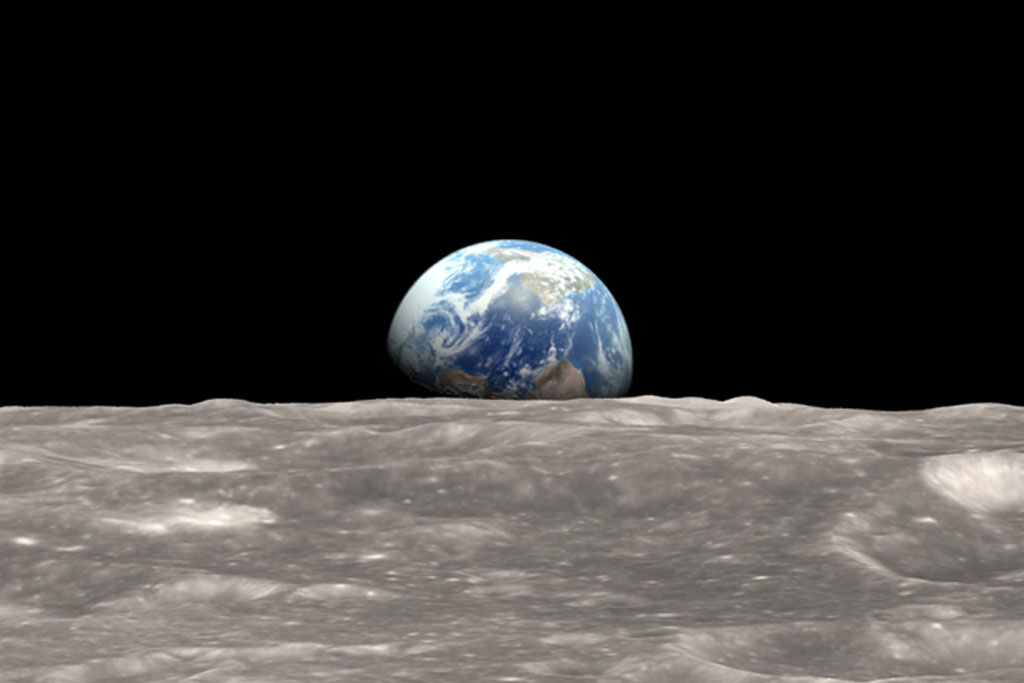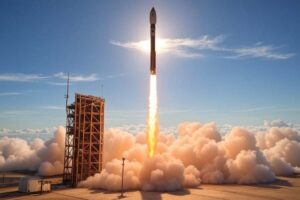The Moon has long held a special place in human imagination and history. From the first moon landing in 1969 to the last Apollo mission in 1972, humanity took its first tentative steps into the cosmos, marking a monumental achievement driven by the space race between the United States and the Soviet Union. Yet, after the Apollo missions concluded, the lunar surface fell silent—no more Apollo astronauts walked its dusty plains, and the Moon seemed relegated to a chapter of Cold War history. Now, in the 21st century, the question arises: why should we go back to the Moon? The answer lies in a blend of scientific research, technological innovation, and the promise of a permanent human presence in space. With NASA’s Artemis program, international cooperation, and private companies like Blue Origin leading the charge, returning to the Moon is not just a nostalgic revisit but the next giant leap toward a future of lunar exploration and beyond.
A Historical Milestone: The Apollo Legacy
The Apollo program, spurred by President John F. Kennedy’s bold vision to land humans on the Moon, remains one of humanity’s greatest triumphs. On July 20, 1969, Apollo 11 achieved the first moon landing, with Neil Armstrong and Buzz Aldrin becoming the first human beings to set foot on the lunar surface. Over the next few years, Apollo astronauts explored landing sites, collected lunar samples, and brought back lunar rocks that offered a closer look at the Moon’s composition.
Houston, we have a problem
Apollo 13 was NASA’s third mission intended to land on the Moon, launched on April 11, 1970. Just two days into the mission, an oxygen tank in the service module exploded, crippling the spacecraft. Astronauts Jim Lovell, Jack Swigert, and Fred Haise had to abort the Moon landing and focus on survival. Using the lunar module as a lifeboat, the crew and NASA engineers worked together to improvise solutions to life-threatening problems, including limited power, water, and carbon dioxide buildup. Against the odds, the crew safely returned to Earth on April 17, 1970. The mission is remembered as a “successful failure” for its dramatic rescue.
The Apollo landings, culminating with the last Apollo mission in 1972, demonstrated what was possible when a nation united behind a space program fueled by determination and ingenuity.
Yet, the Moon’s story didn’t end with Apollo. The lunar surface holds untapped potential that the Apollo missions only began to explore. For a long time, the Moon was seen as a symbol of victory in the Cold War space race, but today, it represents a stepping stone to deep space and a better place for humanity’s future. The lessons of Apollo—combined with modern advancements—provide compelling main reasons to return.
Scientific Research and Lunar Mysteries
One of the most profound questions driving lunar exploration is what the Moon can teach us about the solar system and the universe. The lunar surface, unlike Earth’s, preserves a record of cosmic history, unmarred by weather or geological activity. Lunar rocks and lunar soil from the Apollo missions revealed clues about the Moon’s formation, but recent discoveries—like water ice at the moon’s south pole—suggest there’s much more to learn. Scientists, including lunar geologist Joseph Silk, argue that studying the far side of the moon with radio telescopes could unlock insights into the first stars and the origins of the cosmos.
The Lunar Reconnaissance Orbiter, launched years after NASA’s initial lunar program, has mapped the moon’s surface in real time, identifying potential lunar mining sites and resources like water ice. This raw material could revolutionize space travel by providing rocket fuel and supporting life in lunar bases. Moreover, the Moon’s unique environment offers a natural laboratory for scientific research, from testing climate change models to advancing lunar science. Returning to the Moon isn’t just about revisiting old ground—it’s about answering questions that Apollo couldn’t.
The Artemis Missions: A New Era of Exploration
NASA’s Artemis program is the cornerstone of modern lunar exploration, aiming to return humans to the Moon and establish a sustainable presence. Unlike the Apollo missions, which were short-term visits, Artemis envisions lunar bases and a permanent human presence. Artemis I, an uncrewed mission, has already tested the Space Launch System—the biggest rocket ever built—paving the way for Artemis II, a crewed mission to lunar orbit, and Artemis III, which will land the first woman and the next man on the moon’s south pole. These Artemis missions build on the legacy of Apollo while leveraging new technologies and international partners.
The Artemis Accords, a framework for international cooperation, underscore the collaborative spirit of this lunar program. The European Space Agency, Japan, Canada, and others are joining the United States, contrasting with the competitive tone of the Cold War. Even China’s Chang’e missions, which have explored the far side of the moon, highlight a global interest in lunar exploration. The International Lunar Research Station, a proposed joint effort, could further unite nations in a shared quest. This is no longer a unilateral endeavor but a commercial venture and a collective mission for human spaceflight.
Resources and Economic Potential
The Moon’s resources are a key reason to return. Water ice, discovered in shadowed craters at the moon’s south pole, could be harvested for rocket fuel, drinking water, and oxygen—essential for sustaining human settlement and powering future missions to deep space. Lunar mining of raw materials like helium-3, a potential fuel for nuclear fusion, could transform energy production on Earth. The lunar lander designs of today, supported by private companies like Blue Origin, aim to make resource extraction viable, turning the Moon into a refueling station for the solar system.
This economic potential extends beyond government efforts. Private companies are investing heavily in lunar exploration, seeing it as a commercial venture with long-term payoffs. Blue Origin’s lunar lander and SpaceX’s ambitious plans signal a shift from the Space Shuttle Program era to a new age where the private sector drives innovation. The Outer Space Treaty, signed in 1967, prohibits territorial claims, but it allows resource use, opening the door to lunar bases and economic opportunities that could benefit humanity for generations.
A Stepping Stone to Deep Space
The Moon is more than a destination—it’s a proving ground. Low-Earth orbit missions, like those to the International Space Station, have taught us how to live in space, but the lunar surface offers a harsher environment to test technologies for deep space. Artemis missions will refine lunar orbit operations, crewed mission logistics, and life-support systems, preparing us for Mars and beyond. The moon’s south pole, with its unique conditions, is an ideal site for robotic exploration and human settlement experiments.
This lunar program isn’t just about the Moon—it’s about the future exploration of the solar system. The experience gained from lunar missions will inform how we send human beings to Mars, establish bases there, and eventually explore outer space. The Moon is our closest neighbor, making it the logical next step before we venture into the unknown.
International Cooperation and Unity
Returning to the Moon fosters international cooperation in a way the Apollo missions never could. The space race of the 20th century was a contest, but today’s lunar exploration is a joint effort. The European Space Agency contributes technology, Japan provides lunar lander components, and even Russia has expressed interest in the International Lunar Research Station. This unity contrasts with the Soviet Union’s isolation during the Cold War and reflects a 21st-century approach to space administration.
The Artemis Accords reinforce this collaboration, setting guidelines for peaceful exploration and resource sharing. Unlike the Apollo program, which was a U.S.-led triumph, the Artemis missions are a global endeavor, inviting international partners to share the costs and rewards. This cooperative spirit could make the world a better place, proving that humanity can work together on the most ambitious projects.
Inspiring the Next Generation
The first moon landing inspired millions, and returning to the Moon can do the same. In recent years, interest in space has surged, fueled by private companies and ambitious goals like Project Artemis. Seeing the first woman walk on the lunar surface or witnessing a moon base take shape could ignite curiosity in young people, encouraging them to pursue careers in science, technology, and engineering. The Apollo landings were a defining moment; the Artemis missions could be the same for the 21st century.
President John F. Kennedy’s call to reach the Moon galvanized a generation. Today, leaders echo that vision, framing lunar exploration as a way to answer the most profound questions about our place in the universe. The Moon’s mystique—its far side unseen from Earth, its rugged terrain—continues to captivate, making it a symbol of what’s possible.
Overcoming Challenges
Returning to the Moon isn’t without obstacles. The Space Launch System has faced delays, and funding remains a concern. Critics argue that resources should focus on Earth’s problems, like climate change, rather than lunar missions. Yet, the Moon offers solutions—its water ice could reduce reliance on Earth-based rocket fuel, and lunar science could inform climate models. The investment in lunar exploration pays dividends in technology, jobs, and knowledge.
Logistical challenges, like landing on the moon’s south pole or building lunar bases, require innovation. Robotic exploration, such as the Lunar Reconnaissance Orbiter, has scouted the terrain, but human spaceflight demands precision. The Artemis II crewed mission to lunar orbit will test these capabilities, ensuring we’re ready for the surface of the moon.
The Next Giant Leap
Why should we go back to the Moon? Because it’s more than a rock in the sky—it’s a gateway to the future. The Apollo missions were a first time, a proof of concept; Artemis is about permanence and possibility. From scientific research to lunar mining, from international cooperation to deep space preparation, the main reasons are clear. The lunar surface holds resources, history, and potential that we’ve only begun to tap.
In the words of President John F. Kennedy, we choose to go to the Moon “not because it is easy, but because it is hard.” That challenge drove the Apollo program, and it drives us now. With NASA’s Artemis program, private companies, and international partners, we’re poised to return—not just to revisit, but to stay. The Moon is our next giant leap, a foundation for human settlement, and a beacon for future missions. As we look to the stars, the lunar surface is where we’ll take our stand, turning dreams of outer space into reality.
Related:


